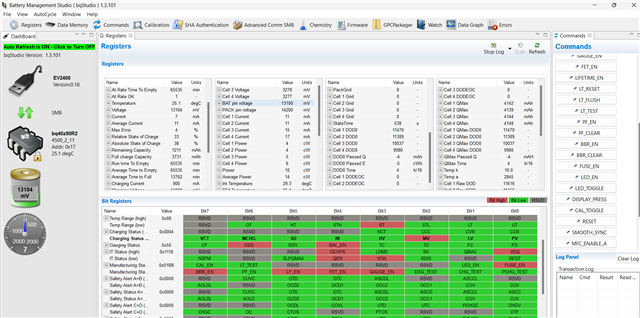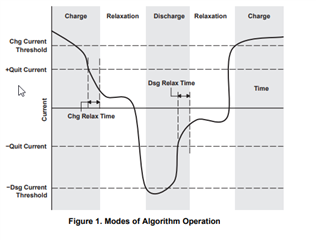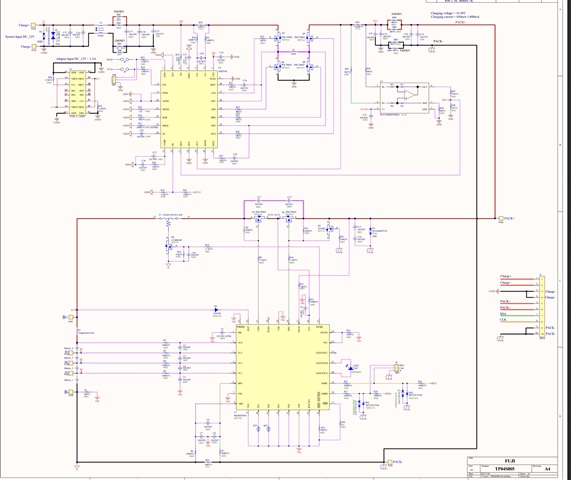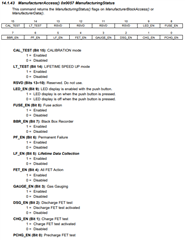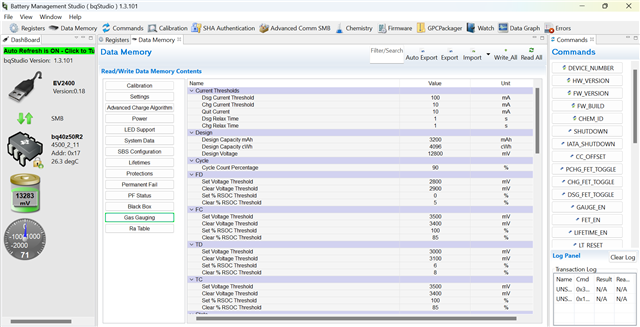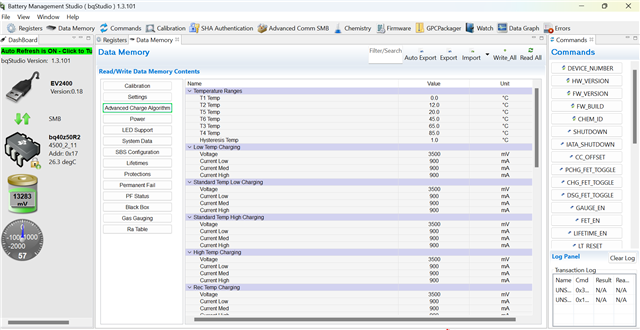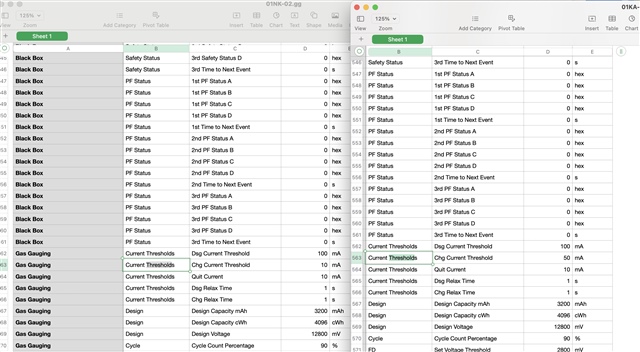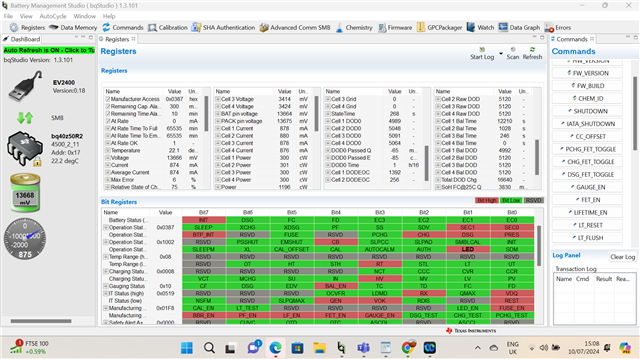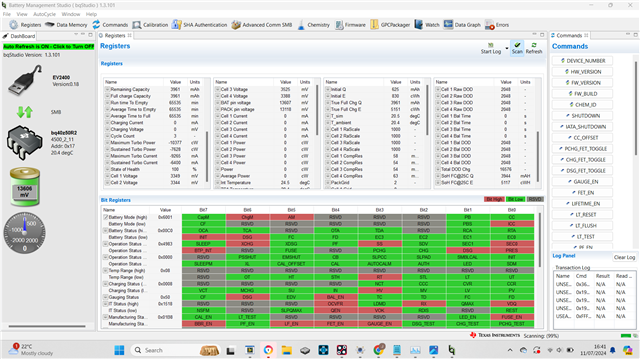Other Parts Discussed in Thread: BQSTUDIO, , BQ40Z50, EV2400
Hi,
When trying to charge my battery pack i realised that it was not charging properly
after observing battery in BQstudio i noticed that the charge current was <10mA
what could be the potential cause here ?
i've attached BQstudio screenshot showing pack settings
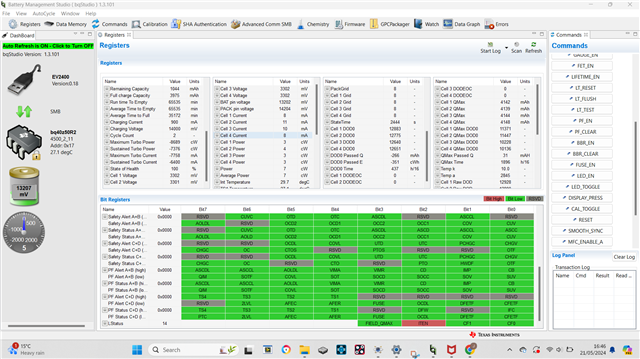
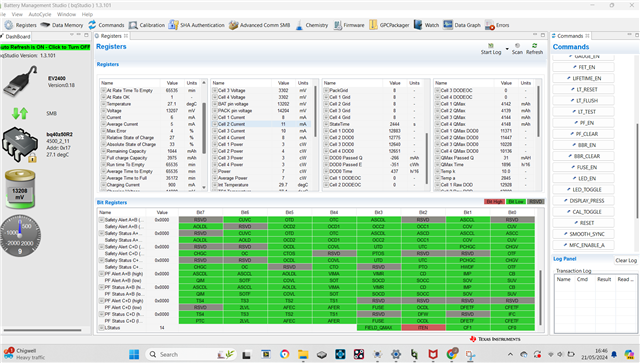
Regards
Jonathan Kabangu


